Country
Crash of an Avro 748 in George: 3 killed
Date & Time:
Jun 1, 2002 at 0715 LT
Registration:
ZS-OJU
Survivors:
No
Schedule:
Bloemfontein - George
MSN:
1782
YOM:
1980
Crew on board:
2
Crew fatalities:
Pax on board:
1
Pax fatalities:
Other fatalities:
Total fatalities:
3
Captain / Total hours on type:
1819.00
Copilot / Total hours on type:
518
Aircraft flight hours:
14226
Aircraft flight cycles:
19789
Circumstances:
The aircraft was on a scheduled freight flight from Bloemfontein to George. Poor weather conditions prevailed over the George area and the pilots had to execute an instrument guided approach for the landing. The ground based Instrument Landing System (ILS) on Runway 29 at George Aerodrome was intermittently unreliable during the approach. The pilots decided to execute a missed approach. During the missed approach the pilots did not comply with the published missed approach procedure and with a combination of strong winds and possible erroneous heading indications they lost situational awareness. They flew the aircraft into a valley and crashed into the side of the mountains North-East of the George Aerodrome. The passenger was Hansie Cronje, a former South African cricket captain who had missed a South African Airlines flight.
Probable cause:
The crew deviated from the prescribed missed approach procedure during an attempted Instrument Landing System landing on Runway 29 at George in Instrument Meteorological Conditions and lost situational awareness aggravated by the presence of strong upper SouthWesterly winds. They allowed the aircraft to drift off course resulting in a controlled impact with terrain 6.7 nm North-East of the aerodrome. Contributing factors to the probable cause were the weather conditions, the intermittent unreliability of the Instrument Landing System, the serviceability of the directional gyro and the uncleared defects.
Final Report:


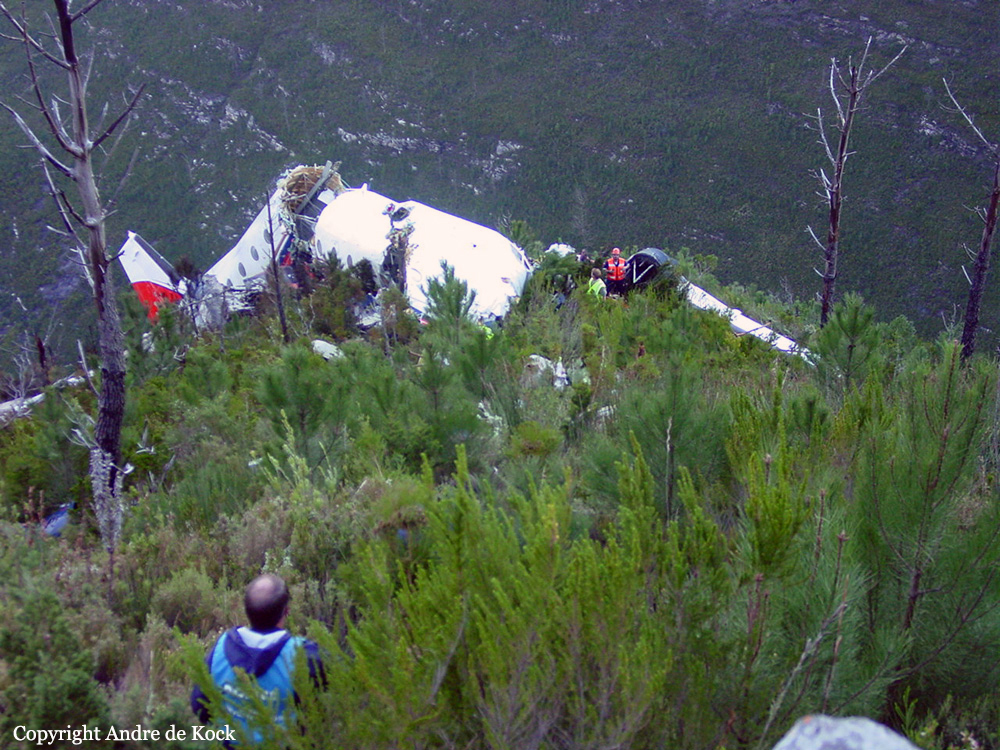

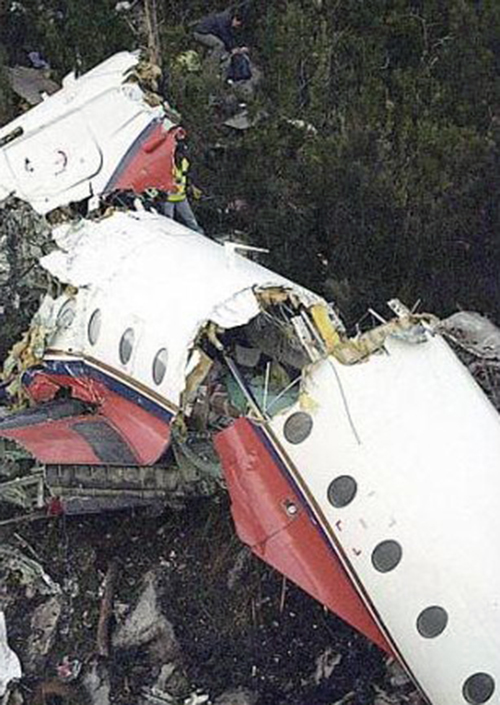
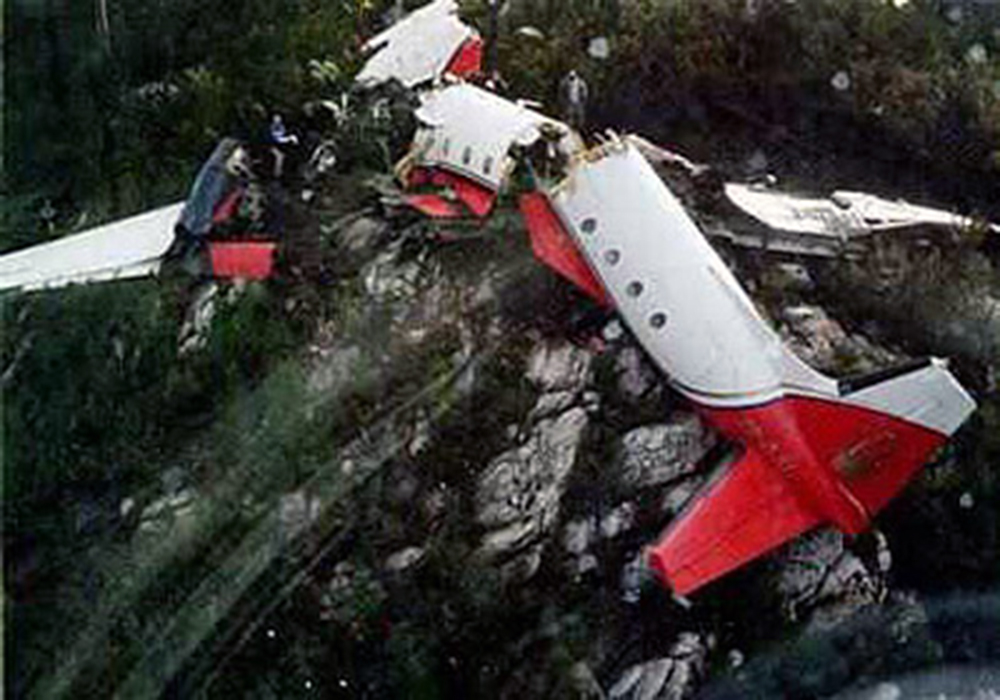
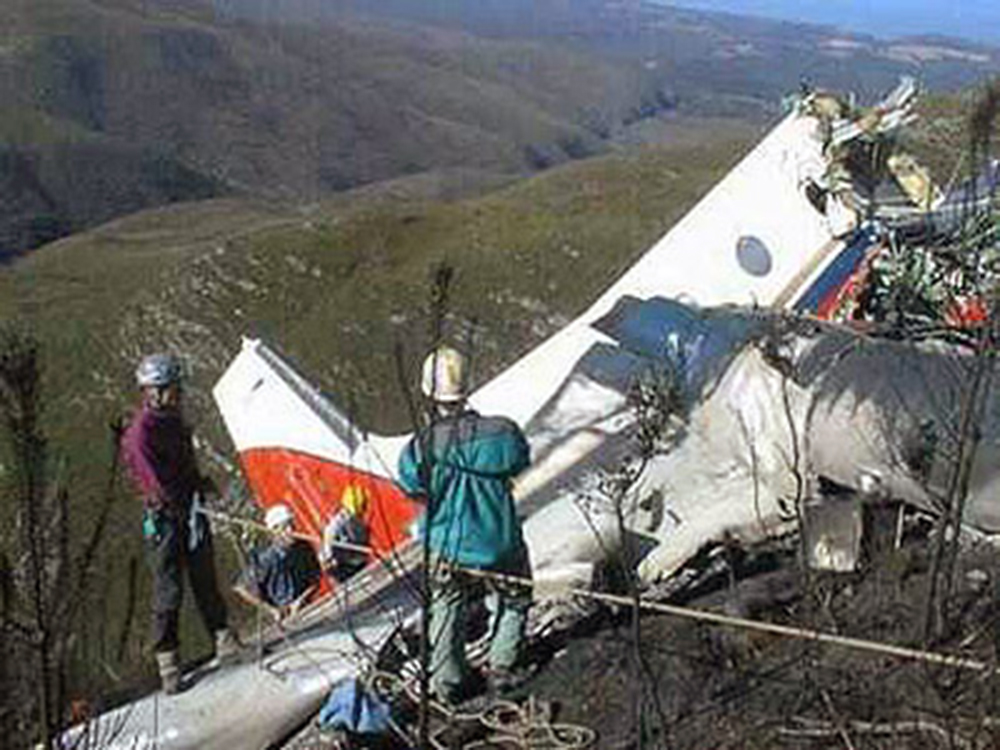
Crash of an Avro 748-372-2B in Sun City
Date & Time:
Apr 16, 2002 at 1334 LT
Registration:
ZS-OLE
Survivors:
Yes
Schedule:
Skukuza - Sun City
MSN:
1796
YOM:
1982
Crew on board:
5
Crew fatalities:
Pax on board:
42
Pax fatalities:
Other fatalities:
Total fatalities:
0
Captain / Total hours on type:
755.00
Circumstances:
During the flight from Skukuza to Pilanesberg the aircraft developed a hydraulic problem, resulting in a complete hydraulic failure. However, a safe landing was carried out at Pilanesberg on Runway 23. Shortly after the landing the pilot shut down both engines, but maintained the runway heading for approximately 2000m, before the aircraft veered off to the left of the runway where it entered a ditch, 75m from the runway edge, where it finally stopped. There were no injuries, but the aircraft sustained extensive damage and substantial damage was caused to the perimeter fence around the airport. Both the pilot and the co-pilot were correctly licenced and type rated on the aircraft. Apart from the CVR, which was inoperative at the time of the accident and a leaking L/H hydraulic pump, it would appear that the aircraft was correctly maintained. Fine weather conditions prevailed at the time of the accident. The pilot informed Pilanesberg ATC of a complete hydraulic failure, but did not declare an emergency. The pilot failed to switch off the Nose Wheel Steering after touchdown and also shut down both hydraulic cut-off switches. The Emergency Checklist does not provide for a complete hydraulic failure.
Probable cause:
The accident resulted from a complete hydraulic failure, probably as a result of a leak on the L/H engine pump, which was not dealt with properly. Contributing to this was an incomplete emergency checklist.
Final Report:

Crash of an Avro 748-501-2B in Kathmandu: 15 killed
Date & Time:
Sep 5, 1999 at 1030 LT
Registration:
9N-AEG
Survivors:
No
Schedule:
Pokhara - Kathmandu
MSN:
1806
YOM:
1988
Flight number:
3Z104
Crew on board:
5
Crew fatalities:
Pax on board:
10
Pax fatalities:
Other fatalities:
Total fatalities:
15
Circumstances:
On approach to Kathmandu-Tribhuvan Airport under VFR mode, the crew encountered limited visibility due to a low cloud layer. On final, at an altitude of about 6,000 feet, the aircraft collided with a radio antenna (100 feet high) located on the top of a hill and owned by the Nepalese National Broadcasting Company. The aircraft went out of control and crashed seven km short of runway 02. All 15 occupants.
Probable cause:
Collision with obstacle on a VFR approach in limited visibility.
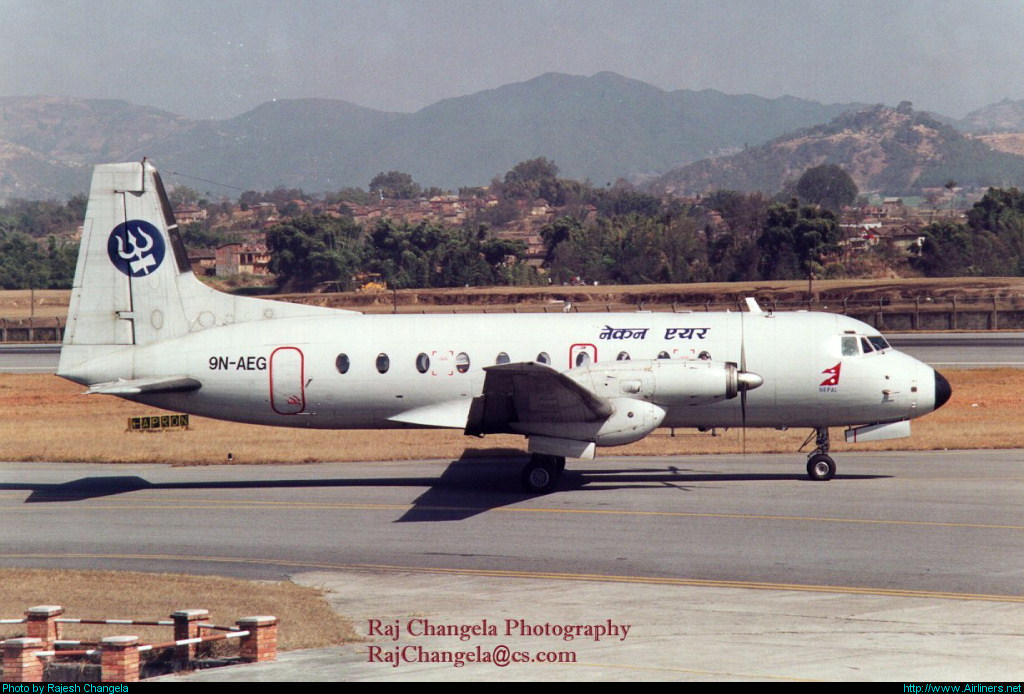
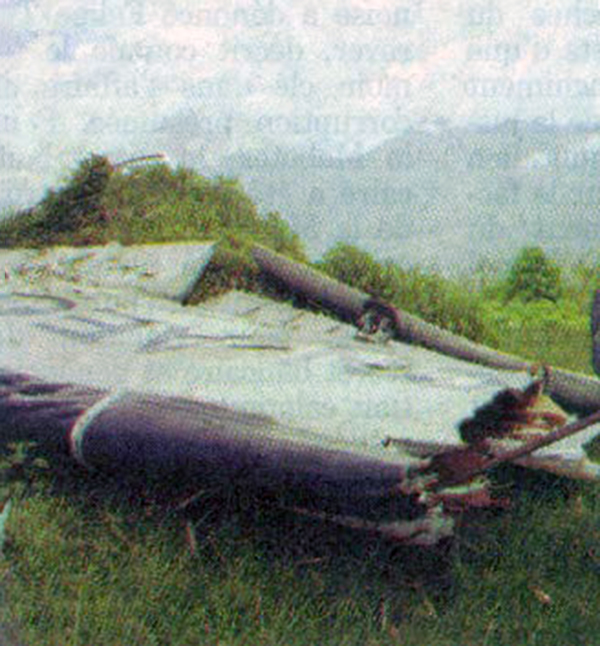

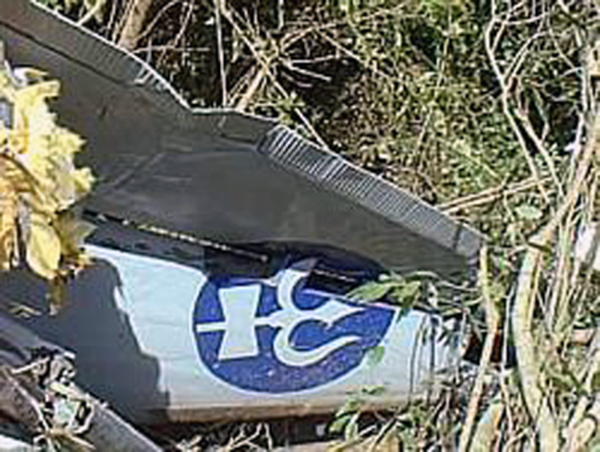
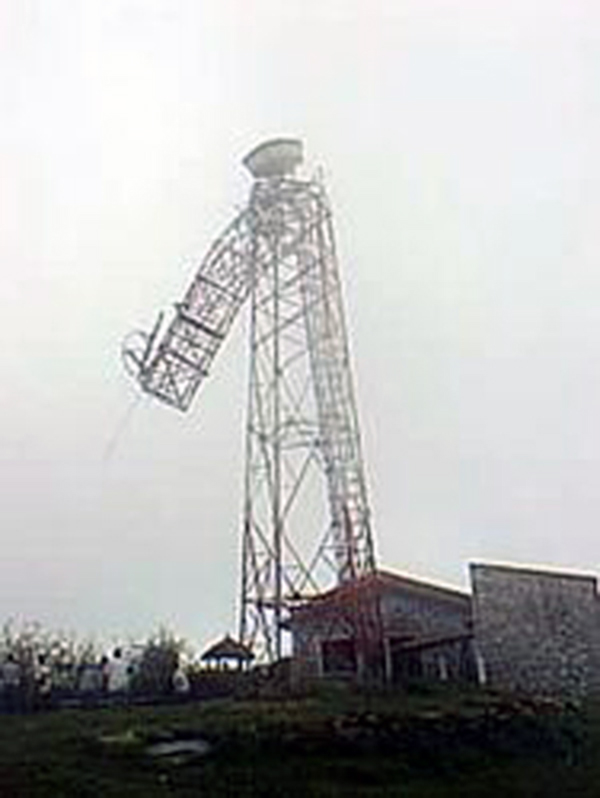
Crash of an Avro 748-335-2A in Iqaluit
Date & Time:
Dec 3, 1998 at 1536 LT
Registration:
C-FBNW
Survivors:
Yes
Schedule:
Iqaluit - Igloolik
MSN:
1759
YOM:
1978
Flight number:
FAB802
Crew on board:
4
Crew fatalities:
Pax on board:
3
Pax fatalities:
Other fatalities:
Total fatalities:
0
Captain / Total hours on type:
800.00
Copilot / Total hours on type:
117
Circumstances:
At approximately 1536 eastern standard time, First Air flight 802, a Hawker Siddeley HS-748-2A, serial number 1759, was on a scheduled flight from Iqaluit to Igloolik, Nunavut. On board were two flight crew, one flight attendant, one loadmaster, and three passengers. During the take-off run on runway 36, at the rotation speed (VR), the captain rotated the aircraft; however, the aircraft did not get airborne. Approximately seven seconds after VR, the captain called for and initiated a rejected take-off. The aircraft could not be stopped on the runway, and the nose-wheel gear collapsed as the aircraft rolled through the soft ground beyond the end of the runway. The aircraft hit the localizer antenna and continued skidding approximately 700 feet. It came to rest in a ravine in a nose-down attitude, approximately 800 feet off the declared end of the runway. The flight attendant initiated an evacuation through the left, main, rear cabin door. The two pilots evacuated the aircraft through the cockpit windows and joined the passengers and the flight attendant at the rear of the aircraft. The flight attendant was slightly injured during the sudden deceleration of the aircraft. The aircraft was substantially damaged.
Probable cause:
Findings as to Causes and Contributing Factors:
1. The captain rejected the take-off at a speed well above the engine-failure recognition speed (V1) with insufficient runway remaining to stop before the end of the runway.
2. The far-forward position of the centre of gravity contributed to the pilot not rotating the aircraft to the normal take-off attitude.
3. The aircraft never achieved the required pitch for take-off. The captain=s inability to accurately assess the pitch attitude was probably influenced by the heavier than normal elevator control forces and the limited nighttime visual references.
4. The loadmaster did not follow the company- and Transport Canada-approved procedures to evaluate the excess baggage added to the aircraft, which led to a discrepancy of 450 pounds and a C of G position further forward than expected.
5. The performance analysis suggested that the aircraft was under-rotated as a result of a forward C of G loading and the generated lift never exceeded the aircraft=s weight during the take-off attempt.
Findings as to Risk:
1. The aircraft was approximately 200 pounds over maximum gross take-off weight.
2. The aircraft accelerated more slowly than normal, probably because of the snow on the runway.
3. Although atmospheric conditions were conducive to contamination and the aircraft was not de-iced, it could not be determined if contamination was present or if it degraded the aircraft performance during the attempted take-off.
4. Water methanol was not used for the occurrence take-off. Use of water methanol may have reduced the consequences of the rejected take-off.
5. The captain did not call for the overrun drill, and none of the items on the checklist were covered by the crew.
6. The co-pilot did not follow the emergency checklist and call air traffic control to advise of the rejected take-off or call over the public address system to advise the passengers to brace.
7. The aircraft lost all its electrical systems during the impact with the large rocks, rendering the radios unserviceable.
8. No HS-748 simulator exists that could be used to train pilots on the various take-off and rejected take-off scenarios.
9. There was confusion regarding the aircraft=s location. The flight service station, fire trucks, and intervening teams were not using an available grid map for orientation.
10. There is a risk associated with not de-icing aircraft before take-off in weather conditions such as those on the day of the accident.
11. There is a risk associated with not calculating the WAT limit and performance of an aircraft during an engine-out procedure in an environment with obstacles.
Other Findings
1. The aircraft=s brakes, anti-skid system, and tires functioned properly throughout the rejected take-off.
1. The captain rejected the take-off at a speed well above the engine-failure recognition speed (V1) with insufficient runway remaining to stop before the end of the runway.
2. The far-forward position of the centre of gravity contributed to the pilot not rotating the aircraft to the normal take-off attitude.
3. The aircraft never achieved the required pitch for take-off. The captain=s inability to accurately assess the pitch attitude was probably influenced by the heavier than normal elevator control forces and the limited nighttime visual references.
4. The loadmaster did not follow the company- and Transport Canada-approved procedures to evaluate the excess baggage added to the aircraft, which led to a discrepancy of 450 pounds and a C of G position further forward than expected.
5. The performance analysis suggested that the aircraft was under-rotated as a result of a forward C of G loading and the generated lift never exceeded the aircraft=s weight during the take-off attempt.
Findings as to Risk:
1. The aircraft was approximately 200 pounds over maximum gross take-off weight.
2. The aircraft accelerated more slowly than normal, probably because of the snow on the runway.
3. Although atmospheric conditions were conducive to contamination and the aircraft was not de-iced, it could not be determined if contamination was present or if it degraded the aircraft performance during the attempted take-off.
4. Water methanol was not used for the occurrence take-off. Use of water methanol may have reduced the consequences of the rejected take-off.
5. The captain did not call for the overrun drill, and none of the items on the checklist were covered by the crew.
6. The co-pilot did not follow the emergency checklist and call air traffic control to advise of the rejected take-off or call over the public address system to advise the passengers to brace.
7. The aircraft lost all its electrical systems during the impact with the large rocks, rendering the radios unserviceable.
8. No HS-748 simulator exists that could be used to train pilots on the various take-off and rejected take-off scenarios.
9. There was confusion regarding the aircraft=s location. The flight service station, fire trucks, and intervening teams were not using an available grid map for orientation.
10. There is a risk associated with not de-icing aircraft before take-off in weather conditions such as those on the day of the accident.
11. There is a risk associated with not calculating the WAT limit and performance of an aircraft during an engine-out procedure in an environment with obstacles.
Other Findings
1. The aircraft=s brakes, anti-skid system, and tires functioned properly throughout the rejected take-off.
Final Report:


